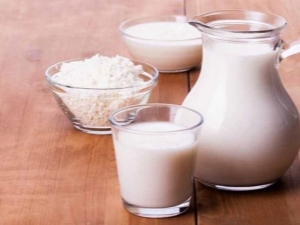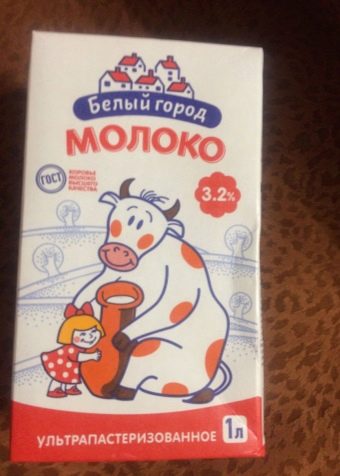Normalized and whole milk: what is the difference and what is better?

Although theoretically cow's milk can be called one of the most sought-after foods in the world, not everyone can give an accurate description of its taste, and the reason for this phenomenon lies in the fact that it does not have a specific taste.
The fact is that modern manufacturers of packaged milk use completely different ways of processing this product, as a result of which the taste of milk in different packages can vary greatly, and in some packages the milk itself is not present at all.Due to the reasons described above, many people do not really know what the milk that a cow gives without any processing tastes, therefore they cannot even compare which type of processed milk is closer to the original, although it is the latter that most likely most useful.
In order to buy and consume a high-quality product, you need at least to understand its varieties, so today we will consider what whole and normalized milk is, and try to compare them.
What is a whole product?
Who at least superficially imagines the process of factory milk processing, he understands that the product is probably heated in the process, and also, possibly, changes the chemical composition, adding something, and removing something. The result is a product that, by its properties, turns out to be quite far from natural milk, although, of course, you should not drink it directly from the udder either.
A kind of intermediate solution is the so-called whole milk. It cannot be said that it does not undergo any treatment at all, however the manufacturer, at least, undertakes not to make any changes in the chemical composition of the product. Because of this, the latter turns out to be somewhat unpredictable, because even the same cow on different days gives milk of different fat content, but there are definitely no synthetic additives in the product, and everything that was useful in it was probably left there.
In many cases, the entire treatment to which a product is subjected, to be called whole, consists in filtering, designed to remove from the liquid all that extraneous that could get there during the milking process. All other types of milk, including pasteurized milk, are made from whole raw materials.
This beverage, like most other food products on our planet, has both advantages and disadvantages. If we talk about the pros, then first of all it is worth mentioning the maximum abundance of beneficial components, including vitamins and trace elements, and calcium occupies a special place among them. Milk is created by nature specifically so that the young body grows, develops and gains strength as quickly as possible, and it is a whole product that has not been subjected to any serious perturbations and is best suited for such purposes.
It is enough to use such a drink regularly so that the body effectively fights with various pathogens, recovers effectively during sleep, maintains the excretory system in a properly functioning state, as well as the skin and the gastrointestinal tract. Take the same famous milk baths - they are really useful, but only on condition that milk contains the maximum of useful substances, which means that for such purposes nothing will be better than a whole product.
Strangely enough, even such a useful product, which, according to the logic of nature, should be optimal for everyone, has certain disadvantages that do not allow using it for everyone. For example, if a person suffers from lactose intolerance, then for him the use of whole milk is contraindicated, because it is nowhere present as much as in this type of drink.
With all the benefits of its diuretic effect, helping to cleanse the body of harmful substances and maintain the kidneys in good condition, abuse of this product in quantities of more than half a liter per day can lead to excessive stress on the excretory organ and the development of its pathologies. Finally, even a high content of healthy in such a liquid does not allow one to call it unconditionally useful for a child - on the contrary, whole milk is usually not given to babies because of its unsettled fat content, because scientists argue that drinking milk is above 2.5% in children in the future will lead to problems with the vessels.
What does normalization do?
As already mentioned, natural cow's milk is not at all distinguished by the stability of its chemical composition, which is not only not good, but also dangerous for those young children. In addition, this variation in the proportions of the milk components plays a cruel joke with the producers of the packaged drink, since they are obliged to indicate the fat content and protein, fat and carbohydrate content of the product in their products, and any deviation from what is written on the package can cause problems with regulatory authorities.
It is not surprising that many dairies prefer not to indicate an approximate figure, which is capable of provoking unnecessary proceedings, but simply “correct” the composition of milk a little. The greatest attention is paid to the adjustment of fat content, since it is this indicator that can vary several times, and is also of great interest to all who watch their figure, as well as to the parents of babies (for the reason already described).
Along the way, they are adjusted to the specified on the package and other ingredients, but here it should be noted that the amount of proteins and other essential constituents usually does not fluctuate as much as fat content.
As a result, we can say that normalized milk, most likely, also does not contain any harmful chemistry, it is just not natural to call it - but you can be sure that the parameters indicated on the box are observed.
In this case, the benefits and harms of such a drink depend on what sort of consumer chooses, and consequently, on what substances in what quantity are included in the composition of the product. The main components of milk in such a package are present in full, only their proportions can be underestimated or overestimated. Thanks to this, the mother can choose low-fat milk for her baby, to be sure that she herself did not cause a serious illness of the child.
Women who strictly follow their own figure, but still want to eat dairy products, can enjoy their favorite dishes without much risk and strict diet, also choosing a product with a low fat content. On the contrary, those who are not limited by their own bodies and love fat milk can choose a product with high fat content, and for those who want to gain weight quickly, this solution is perfect.
If we don’t speak about the problem of lactose intolerance in some people, which is typical for all types of milk, then there is only one drawback to normalized milk - that it is still not a natural product. Manufacturers usually have to go on about those consumers for whom an excess of certain substances in the natural product is undesirable, because normalized milk usually contains several less vitamins and microelements in its composition than whole milk. As a result, if you do not have any dietary restrictions, the latter would be more useful for you.
Comparison
Based on the foregoing, it turns out that both types of milk are useful in their own way, and it would be useful for most people to use them regularly. Both products are characterized by a good content of vitamins and microelements, and at the same time they do not undergo any global processing, which would include, for example, the addition of synthetic flavors. Both types of drink are not found very often, much inferior in popularity to pasteurized or even UHT milk, but the latter two types are distinguished by a more radical processing of raw materials, which proponents of using the most natural animal products probably don’t like.
However, such naturalness gives a general minus - one cannot say that whole or normalized milk has gone through all possible stages of purification, and therefore they can theoretically contain anything, even though such a probability is very small.By the way, the more natural the dairy product, the faster it deteriorates, because these two types of milk do not differ in long shelf life.
The difference between them lies in the degree of adjustment of the composition. Whole milk is not subject to any adjustment on the part of a person, because to some extent it is a complete mystery to a potential consumer. Preference for such a drink should be given because with any more complex processing it will lose some of its beneficial properties, but it is possible that the manufacturer will add even more useful to the normalized product than is present in a particular glass of the whole product.
Finding whole milk on the counter will be quite difficult, since it is rather an intermediate stage in the production of other types of dairy products, including a normalized drink, however, if your own health and your favorite diets do not put any restrictions on the number of calories and fat, perhaps it is worth giving exactly the whole product.
Since we trust nature with its recipes for beauty and health, proven by billions of living organisms, there is no need to make any changes to the working scheme.
However, in the modern world there are certain conditions that make normalized milk more useful in some cases. So, our article is dedicated to cow's milk, the use of which by man is not provided by nature at all, therefore the composition of such a drink cannot always be considered optimal for the organism. In addition, the diet of modern man and so often filled with theoretically useful components, which in excessive quantities begin to cause harm.
Considering the predominantly sedentary way of life characteristic of today's society, it suddenly turns out that an excess percent of fat content over time can give an undesirable weight gain, which not only spoils the appearance, but also creates an additional load on the circulatory system, and as a result even can shorten the duration of human of life.
Against the background of such a gloomy picture, it turns out that the introduction of certain artificial changes in the structure of milk is not such a big evil. Many people simply love the taste of this drink and products from it, and even the simple use of your favorite dishes can improve your mood and support the same nervous system. Besides, normalization is not intended to completely kill the beneficial properties of cow's milk - on the contrary, it should, if possible, preserve them, only eliminating potential risks.
Since normalized milk is sold in dozens of different options, each person can choose a package in such a way that it brings maximum benefit within the framework of what is permitted by the diet. For this reason, normalized milk is not the first choice of an absolutely healthy person, who does not think about the future, but those who strictly monitor their condition should certainly choose such a product.
You will learn more about normalized milk in the following video.

































